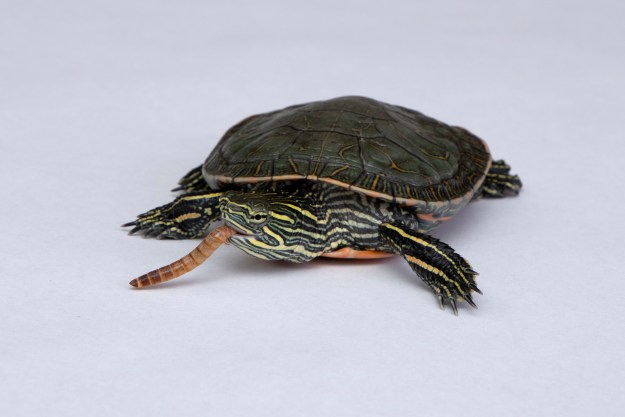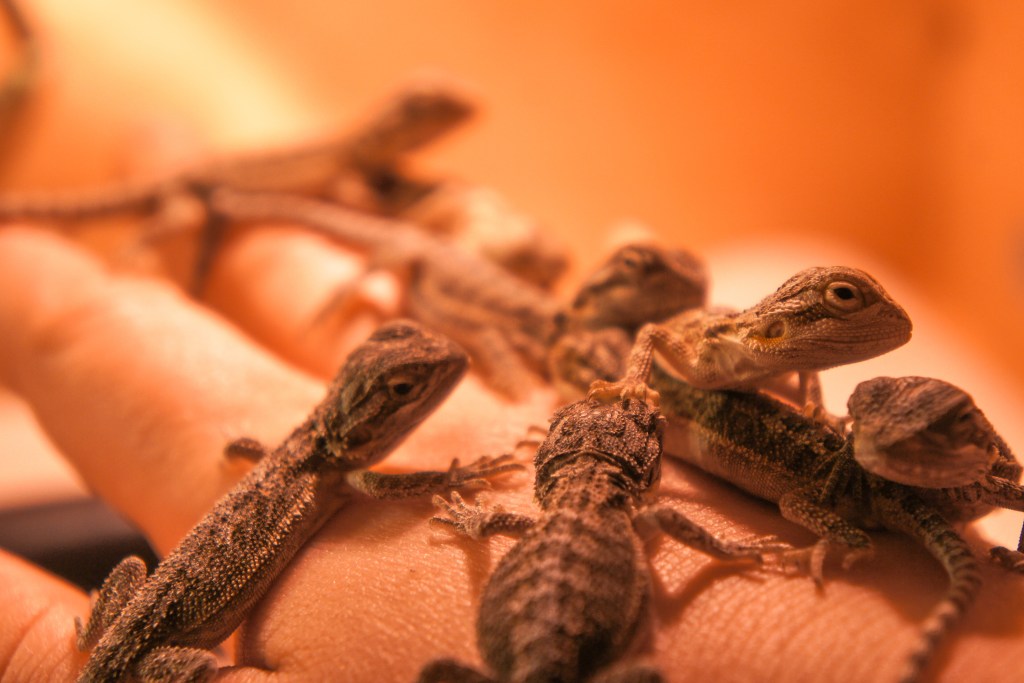
The first step in getting a new pet of any species is research. You want to make sure you’re adopting or purchasing your pet from a reputable breeder who uses ethical sourcing techniques to acquire their animals. While veterinarians suggest that all pet parents spay and neuter their companions, some animals can be bred without causing distress to you or your pet.
One of the easiest pets to breed is the bearded dragon. With that being said, we recommend having experience under your belt before you embark on your journey as a breeder. Here’s what you should know about breeding bearded dragons.
Is my beardie male or female?
When they’re babies, it’s really difficult to tell the sex of your lizard. Wait until he or she reaches maturity before making that determination, which is actually a good thing for breeding. You don’t want to start your female reptile before 18 months for health reasons. In order to look at the little beast, you need to get comfortable enough to feel the underbelly, so give it a few days after bringing your beardie home.
Then do a hemipenal check. While your pet rests safely, gently lift up the tail at the base and see if you spot hemipenal bulges in his underbelly. See them? You have a male. If it doesn’t work the first time, grab a flashlight to help you with the process. Don’t forget, your exotic vet can always assist if you find yourself stumped by this method.
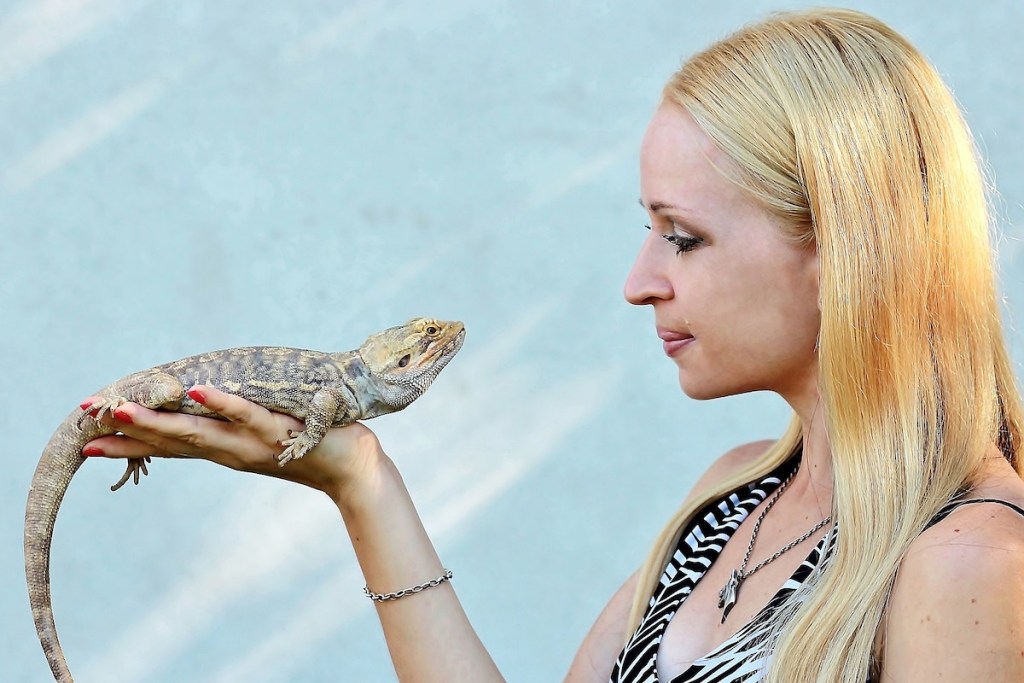
What prep and gear do I need?
Most of what you require for breeding, you should already have for successfully keeping beardies in the first place. That means a large cage, substrate, accessories, and heating and UVB lamps. Those are just the absolute basics necessary to maintain good health and happiness in your herps.
Additionally, you’ll want a separate tank to move the female to while she’s gravid, and also a lay box. Once the eggs are laid, you may decide to incubate them in a separate area with its own heating and hydrating system.
Lastly, you must have a place ready to go for any babies that do come around.
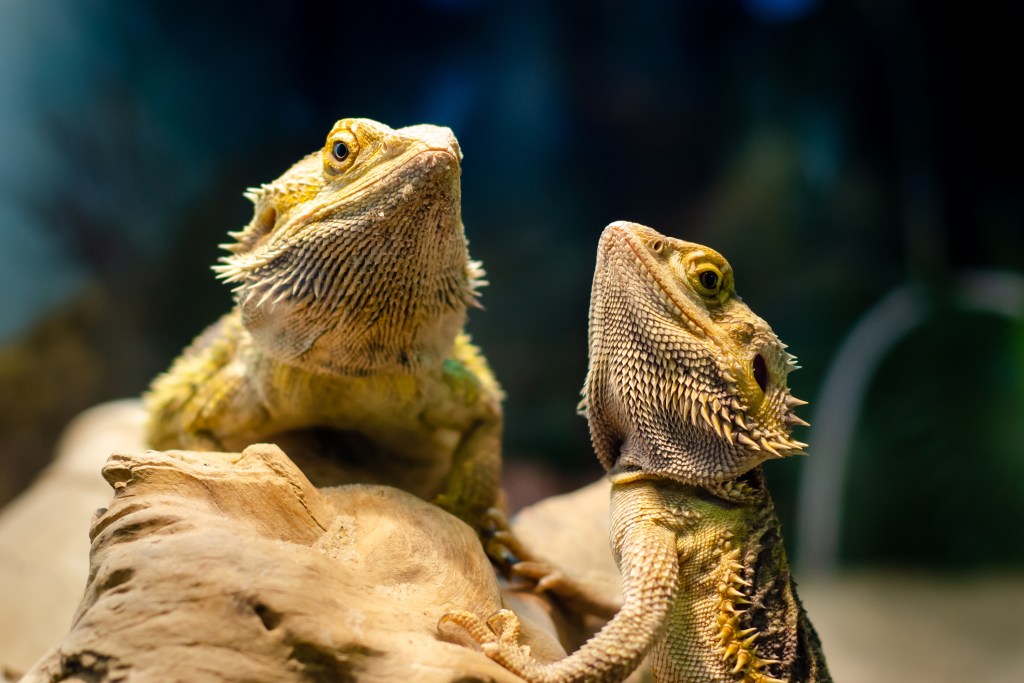
How do I breed my female beardie?
- Don’t breed a female unless she’s very healthy with a balanced diet and good habitat.
- It seems counterintuitive, but you actually want to decrease the light and temperature for part of the day for a few months to get her into the groove.
- Introduce the male slowly and ensure they adjust to each other properly; you don’t usually have to worry about either of them becoming too aggressive during the process (even if it looks a bit scary to you).
- After a month or two, she’ll lay the eggs.
It’s extremely normal for them not to take the first time; don’t despair if you wind up with unfertilized eggs. Wait and then try again in the future.
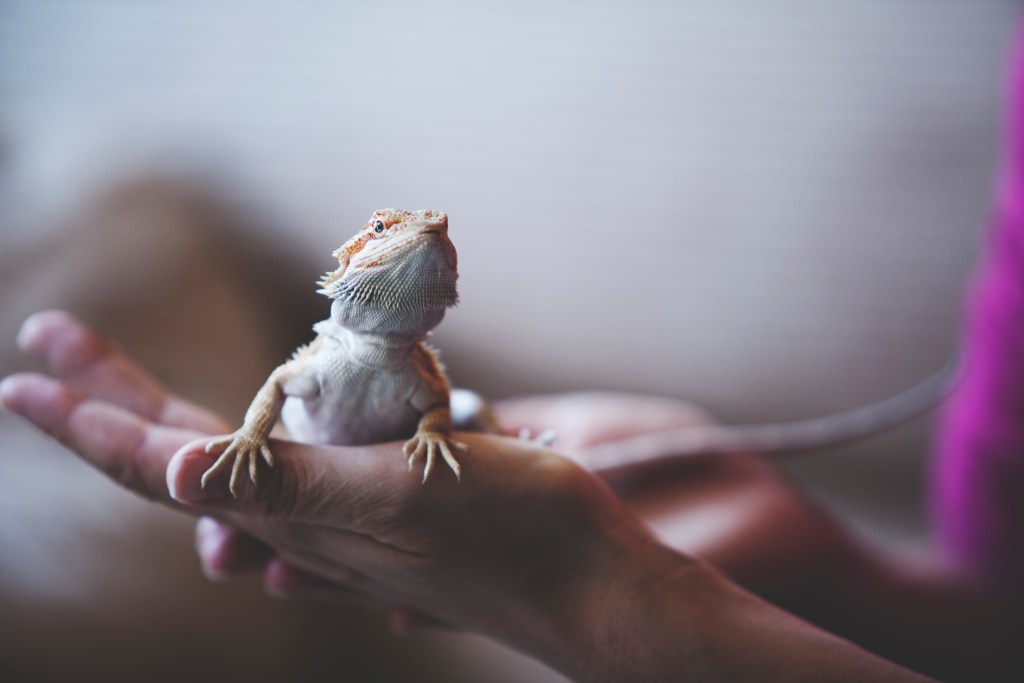
What do I do with the babies?
While the eggs rest, you still must carefully monitor them and keep conditions optimal. When hatching time comes, leave the new little babies alone and let them do their thing. Have an enclosure prepared and start finding forever homes for your mini lizards. You likely won’t want to keep two dozen more beardies in addition to the male and female you already have. This is where you could recoup some of your costs.
If you have local friends or stores that might help facilitate the sales, that’s a great way to go. Otherwise, look into online postings on reputable websites. You could get up to $50 per animal, though remember that you need to deduct your equipment costs from that. When you add in all the time it takes to care for both parents and babies, you won’t typically make much profit.
While many methods of bearded dragon breeding are ethical, you do want to make sure you don’t contribute to an oversupply of pets. Never hatch more babies than you can sell or give away, and do your own research to confirm they wind up in good homes (as best as you can). You can help assure this by only allowing each individual to purchase a few animals and asking them about their setup and knowledge of herping. And wait to get into it until you’re ready! Most owners become experts in their dragons before jumping into the mating game.
Editors' Recommendations
- What causes high pH in an aquarium? We’ll walk you through getting your tank levels in check
- What fish can live with bettas? These are your best bets for fish buddies
- Looking to add corydoras to your aquarium? Here’s what you need to know first
- Can snakes swim? Here’s what you need to know about how these legless creatures move through water
- Everything you want to know about the reptile life cycle, from egg to adulthood



